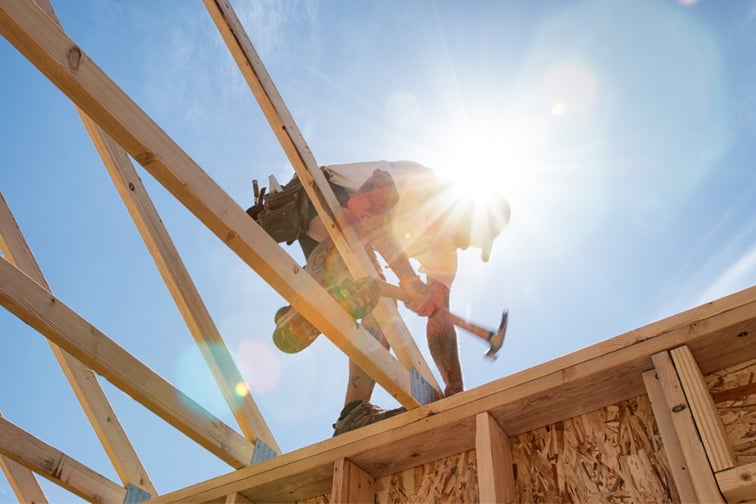

Supply chain challenges and inflationary pressures have left contractors and developers with soaring insurance costs amid a scramble to extend cover for delayed projects.
The cost of some materials has surged since the onset of the coronavirus pandemic, while an underwriting expert told Insurance Business that supply chain delays have meant policyholders may require an extension of builder’s risk, or course of construction (COC) cover, where projects overrun – something that not all carriers are willing, or able, to provide.
“If you had bought a policy a year ago, and then you’re getting hit with these massive delays and getting jobsite materials, you’re going to have to extend that policy, which is increasing the cost,” said Argo Group AVP underwriting Mitchell Valadez.
Argo has not placed a moratorium on extensions and Valadez said the underwriter is “addressing them with the individual account as needed”.
However, he said that some carriers are “not willing to extend or they’re not willing to extend past a certain amount.”
“There are some hard cut offs in the marketplace, which has created an increase in midterm COCs where [policyholders] have to go and find a carrier to pick up a job that’s been under construction because their carrier won’t extend it, and that really hammers the contractor’s bottom line,” Valadez said.
It is not just that insurers are playing hardball, as carriers that may be looking to extend coverage may face difficulties themselves in arranging adequate reinsurance.
“Reinsurance challenges existed prior to the supply chain challenges that the pandemic brought out,” said John Frazee, Marsh US marine practice managing director. “It’s like a Jenga puzzle, it just keeps stacking up.
“What we do see with extension problems is the underwriter’s reinsurance, on construction projects or builder’s risk projects specifically, they’re usually underwritten for a period of time – this project is going to take 12, 18 or 24 months.
“The underwriter writes to that specific time period and may give it a small factor for it going over, but they buy reinsurance for that period. And if something goes beyond their ‘fudge factor’, they’re going to have a challenge getting extensions.”
The reinsurance market has had a general wariness about property and short tail risk and, amid increased rates in mid to longer tailed commercial lines, reinsurers are typically “allocating more to casualty risks”, according to AM Best director, industry research & analytics Sridhar Manyem.
Frazee said reinsurance issues were not being seen across all markets, with how reinsurance has been structured and delay type and length all key factors.
For builder’s risk underwriters, there are also mounting concerns as projects overrun.
Frazee said: “One of the things when you look at builder’s risk, is you have a two- or three-year project and you’re watching everything, saying ‘please be OK, everything’s getting to where it’s going’.
“And then as that starts to expand beyond that whatever that period is, the underwriters are worried about the focus of that project, because other projects start to happen as well.
“There’s an underwriting concern that has to be overcome, to make sure that the underwriters are comfortable with the client’s safety protocols and that they’re still on their game as if this was still in midstream and go from there.”
Inflationary pressures are also being felt “across the board”, Frazee said, with insurance buyers’ risk profile potentially remaining the same in terms of volume, but a surge in the pricing of commodities meaning they risk being underinsured.
Builder’s risk challenges have been intensified by rising lumber prices, which quadrupled at the start of the pandemic, according to AM Best analysts. This was driven by a shortage of processed wood products such as softwood lumber and plywood, stemming from pandemic worker scarcities.
AM Best associate director David Blades said: “The lumber shortage was subsequently worsened by the supply chain crisis. Lumber prices also increased because of increased demand related to the demand for domestic real estate and the increase in home improvement projects by families stuck at home during the shelter-in-place orders and/or by those looking to create better work-from-home areas in their houses.”
Catastrophes losses, as well as attritional losses, can impact on builder’s risk, Blades said, and it is vital that insurance agents “maintain dialogue with their policyholders about maintaining proper insurance-to-value in their policy limits”.
“As building materials and labor costs get more expensive, policyholders need to ensure that the limits in their policies adequately reflect replacement cost, should a claim occur,” Blades said.
Supply chain challenges and delays continue, with truck driver shortages exacerbated by the pandemic, and backups at ports both a result of delays and a cause of setbacks.
Rising gas prices are also contributing to the squeeze, and Russia’s Ukraine invasion means that while pandemic pressure may be easing, uncertainty lingers. Recently, the Federal Reserve also raised interest rates by 0.75%, the largest hike in almost three decades, as it sought to counter the impact of inflation.
“Any monetary policy actions may not provide immediate relief to these pressures and with the Russia-Ukraine conflict contributing to additional uncertainty we do not see any signs of easing soon,” Blades said.
